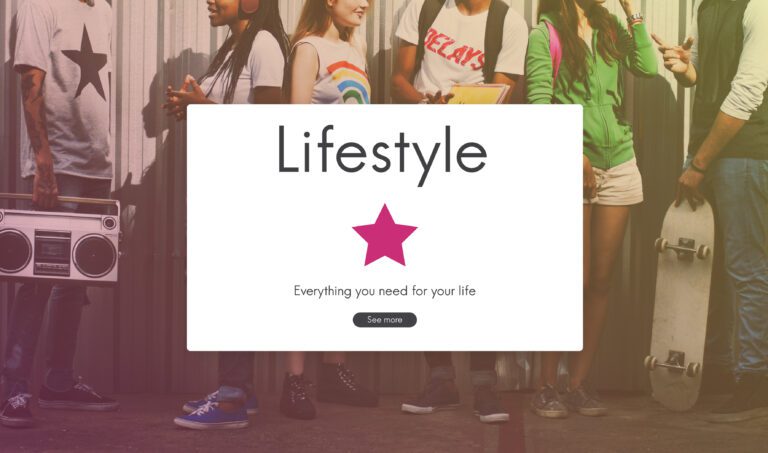Top 20 Proven Tips for Pop Up Boxes on Websites

I hope you enjoy this blog post. If you want Hello Bar to grow your leads, click here.
Author:
Mansi
Published
July 1, 2025

Table of Contents
Pop up boxes on websites can be helpful or a total pain. It depends on how you set them up. Do it well, and they’ll pull their weight. Do it wrong, and they’ll annoy your visitors so much they never come back. Let’s walk through what actually works, what doesn’t, and what you should watch for if you’re thinking of adding pop up boxes on websites you run.
1. Ask yourself: Do you really need a pop up box?
I know this sounds basic, but it matters. A lot of people add pop up boxes on websites just because they see others doing it. Or some plugin said “install me” and they did. But not every page or site needs one.
For example, if someone’s reading your blog post to learn how to fix a leaky tap, do they really want a pop up box asking them to sign up for your newsletter about kitchen remodeling? Probably not. Pop up boxes on websites should feel useful. So before adding one, ask: What does my visitor get from this? Not just you.
2. Don’t be clingy
Some pop up boxes on websites act like a needy friend who can’t take a hint. You close it, it pops right back up. Or worse, you can’t find the “X” to close it. That’s the fastest way to lose trust.
Make your pop up boxes easy to close. One click. Visible “X” or “No thanks” button. And respect that choice — don’t show the same box on every page load. Set your tool to remember when someone closes it. Good pop up boxes on websites know when to step back.
3. Timing is everything
You ever land on a site, and boom — pop up box in your face before you’ve even read the headline? That’s just bad manners. Give people a minute to breathe.
One way that works: use scroll-based triggers. Maybe you show your pop up box after someone scrolls halfway down the page. That means they’re interested. Or try a time delay — 30 seconds is a common sweet spot. The idea is simple: let people get some value first, then ask.
Good pop up boxes on websites wait for the right moment.
4. Get to the point fast
A pop up box is not a billboard. It’s a tiny box stealing someone’s attention. Don’t fill it with your life story. One clear message. One action.
Bad: “We are a leading provider of high-quality, bespoke content solutions designed to bring your business to new heights. Sign up for our award-winning newsletter today to stay ahead.”
Better: “Want more traffic? Get my weekly SEO tips.”
Short. Real. Straight up. If your pop up boxes on websites read like they belong in an ad agency pitch, rewrite them.
5. Make your offer worth it
Why should anyone care? If your pop up box says “Subscribe to our newsletter,” that’s not good enough. Nobody wants more emails. They want something for themselves.
Try a lead magnet. A quick checklist. A discount. Early access. A clear reason that makes your pop up box feel like a fair trade. The best pop up boxes on websites always answer “What’s in it for me?”
Example: Instead of “Join our list,” try “Grab 10% off your first order.” Or “Download our 5-minute guide to faster page loads.”
6. Design like you’re a visitor
Design matters. Ugly or clunky pop up boxes on websites make you look sloppy. But don’t overdo it. It shouldn’t look like a carnival. Simple, clean, and easy to read. Big text. Clear buttons. Good color contrast.
Also, make sure they’re mobile-friendly. So many sites forget this. You ever try to close a pop up box on your phone and the tiny X is hidden behind your thumb? Frustrating. Test your pop up boxes on websites on different devices. If you’re not testing them, you’re guessing.
7. Don’t block the good stuff
This should be obvious, but you’d be surprised how many pop up boxes on websites block the main content. Like, you’re trying to read an article and half of it is hidden behind a giant box.
Keep it out of the way. Try slide-ins instead of full-page overlays. Or use exit-intent pop up boxes — they only show when someone’s about to leave. That way you don’t ruin the experience for people who just got there.
8. Keep it legal
This part’s boring but real. If you’re collecting emails through pop up boxes on websites, you’ve got to think about privacy rules. GDPR if you’re in Europe, CAN-SPAM in the US. Don’t just grab emails and blast them without consent.
Always have a clear opt-in. Make it obvious what people are signing up for. And let them unsubscribe easily later. Nothing shady. Good pop up boxes on websites don’t trick people.
9. A/B test your ideas
You don’t need to be a data nerd to test pop up boxes on websites. Just change one thing at a time — headline, color, call to action — and see which one gets better results.
Some pop up tools have built-in testing. Use it. What you think works might flop. What you think is boring might win. The truth is in the numbers. Trust them.
10. Don’t overdo it

Yes, pop up boxes on websites can work. But piling on five different boxes on the same page? Not smart.
I’ve seen sites with a welcome pop up, a scroll pop up, a cart pop up, and then a chat box that acts like a pop up too. It’s chaos. Pick one or two that make sense for your goal. More pop ups don’t mean more conversions. They often mean more drop-offs.
11. Use exit-intent pop ups wisely
Exit-intent pop up boxes on websites are those sneaky boxes that show up when your mouse heads toward the back button. They can work, but don’t rely on them alone.
If your only plan is to stop people from leaving at the last second, you’re missing bigger problems. Fix why they want to leave in the first place — slow site, bad content, high prices — instead of hoping a desperate pop up box will save you.
12. Match your pop up to your page
A generic pop up box on a specific page doesn’t feel right. Tailor it. If someone’s reading about email marketing, show an offer for an email guide. If they’re on your pricing page, maybe offer a special discount.
One-size-fits-all pop up boxes on websites feel lazy. Smart targeting makes them feel like a helping hand instead of an interruption.
13. Don’t bury the unsubscribe
If your pop up box gets people on your list, don’t play games later. Make it easy for them to leave if they want to. Hidden unsubscribe links or tiny text at the bottom of the email will only annoy people. Bad experience means they’ll never trust your pop up boxes on websites again.
14. Respect repeat visitors
If someone comes back to your site five times, don’t keep showing them the same pop up box every single time. It’s like someone saying “Hi” to you on every floor of an elevator.
Use frequency caps. Some pop up tools let you set rules like “Show this once every 7 days.” Use them. Your visitors will thank you. Good pop up boxes on websites should feel like a helpful nudge, not a pushy ad.
15. Don’t trick people
This one’s big. Don’t make your “X” tiny and nearly invisible. Don’t use fake buttons. Don’t auto-check boxes for them. Pop up boxes on websites that trick people into clicking or giving up their info will hurt you long-term.
People talk. They remember when they feel tricked. And when you lose trust, you rarely get it back. Play fair.
16. Keep track of results
Love what you are reading? Read this Learn How to Calculate Lead Conversion Rate to Measure ROI
You can’t fix what you don’t measure. If you’re using pop up boxes on websites, keep an eye on your data. How many people see it? How many people click? How many actually do what you want?
If your pop up boxes are annoying but not converting, it’s time to tweak. Sometimes removing a pop up box does more good than keeping it. Don’t get attached to them.
17. Look at what others are doing (but don’t copy blindly)
It helps to see real examples. Go to sites in your industry. See what pop up boxes on websites look like there. How often do they show? What do they offer? What feels annoying? What feels helpful?
Learn, but don’t copy paste. Your audience is yours, not theirs. So adapt ideas that make sense for you.
18. Avoid too many form fields
Pop up boxes on websites that ask for your name, email, phone, company, job title, and blood type (kidding, but you get the point) — they kill conversions. The more you ask, the more people bail.
Stick to the minimum. Usually just an email. Unless you really need extra info, don’t ask for it.
19. Keep your brand voice
Don’t make your pop up boxes on websites sound stiff or robotic. If your site’s vibe is casual, keep it casual. If you joke around on your product pages, joke around in your pop ups too. Consistency builds trust.
People can sniff out copy-paste pop up templates from a mile away. Write like you talk.
20. Always put people first
At the end of the day, pop up boxes on websites are not magic. They’re a tool. They don’t replace good content, fast loading, clear messaging, or fair pricing. They just help you nudge people to act when they’re ready.
So keep checking in with your real goal: making your site better for people. Not just grabbing emails or pushing offers. When you do that, pop up boxes on websites actually work.
Final thought
If you’re gonna use pop up boxes on websites, use them with some respect for the people on the other side of the screen. That’s it.






